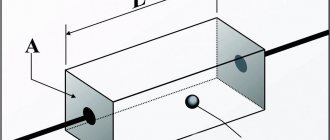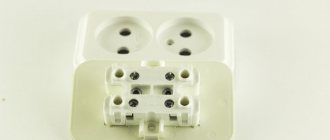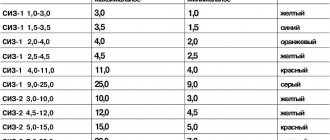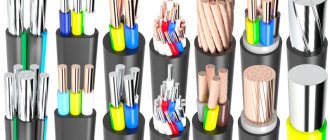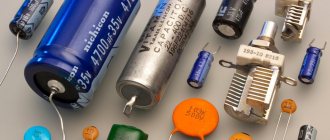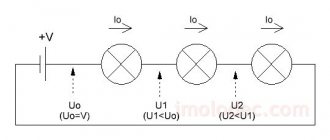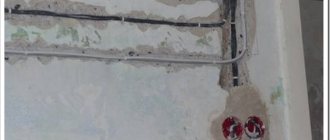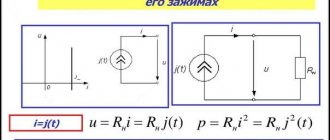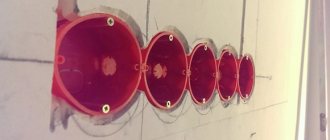In the process of engineering and technical work, protection is indispensable. Insulation is essential for the continued safe operation of various equipment. And this is not only protection from current, but also from humidity, ultraviolet radiation, high temperatures, corrosion and much more, which prematurely damages various structures and devices.
Photos of various insulation can be seen in any catalog of electrical products. After all, first of all, various adhesive dielectric tapes are used to protect people from current and in electrical engineering they are in the highest demand.
The most popular are blue and black electrical tape. It is used both for its intended purpose and for purely decorative purposes. For example, decorating a model’s naked body before a photo shoot.
Electrical tape
When it comes to electrical tape, the first thought that comes to mind is blue PVC electrical tape from the times of the USSR.
It is blue electrical tape that is the basis for jokes and comments that carry no value in some communities. But electrical tapes are produced not only on the basis of PVC film; there are many other types of electrical tapes and below is a list of the most popular electrical tapes. The type of electrical tape is selected based on the tasks, operating conditions, and operating requirements. UPD: This is version 1.0, in version 1.4 this section was significantly expanded. Download links are in part 12.
Storage Features
When storing PVC insulating tape in a warehouse, the temperature regime must be maintained from +50C to +350C, and the humidity level should not exceed 80%. Also, all products should be kept at a distance of at least 1 meter from heating devices. Storage of acids, solvents, chemicals or other aggressive media is not allowed near the storage area of electrical tape. Similar rules apply to many types of electrical insulating materials.
Rubberized fabric tape
An artifact of the Soviet era is still produced and sold - fabric insulating tape (GOST 2162-97) - cotton fabric impregnated with rubber. One of the advantages is that when heated it does not melt, but chars. This is where its advantages end. Despite the impregnation, it is still partially hygroscopic and dries out over time, losing its adhesiveness. Enjoys special love among oldfags.
Fabric rubberized electrical tape of modern production.
Material of manufacture
The first to make such tape was the American company 3MSpam, which at that time produced adhesive tape, reflective film and other materials. The first materials were polyvinyl chloride and the plasticizer tricresyl phosphate. The sample turned out to be working, but the tape quickly became oily, losing its adhesive properties. Until now, PVC tape has been modified 17 times.
Compact and easy to use tape
Nowadays, to make insulation, they use plasticized polyvinyl chloride film, on which a layer of glue is applied. The latter comes in two types: rubber, which makes the tape more durable, and acrylic, which improves its “sticking” property. Acrylic glue, in turn, is more resistant to sunlight.
The sleeve for the tape can be plastic or cardboard. The more common type is made from cardboard - this type of insulation has two layers of glue and a primer between them.
Self-vulcanizing rubber tapes
They are a thick (0.5-1 mm) rubber band with a protective layer. When insulating the connection, the protective tape is removed, and the tape is tightly wound and overlapped. When exposed to air, the overlaps self-weld, forming a monolithic layer. Such a winding cannot then be unwound, only cut.
A roll of self-adhesive (self-vulcanizing) electrical tape. The protective thin layer is removed during winding, and the tape itself is stretched, tightly wrapping around the joint.
Characteristics
For manufacturing in Russia, the standard is GOST-16214-86. Based on it, products are divided into: highest and first grade. For both there are requirements: punctures, tears, bubbles and other defects must be absent.
Heat-resistant tapes are made from different materials
The differences come down to:
- appearance of the roll. First-class products allow bulges on the turns and gaps between layers visible from the end. The highest grade has a completely smooth surface;
- tensile strength. The maximum load for the first grade is 13.7 MPa (140 kgf/cm2), the highest - 14.7 MPa (150 kgf/cm2);
- stickiness. It is measured in seconds during which the tape peels off under the influence of load. The highest grade is 45 s, the first is 40 s.
Main technical characteristics:
- operating range - from -50 to +70 degrees Celsius;
- thickness - from 0.13 to 0.15 mm;
- thickness of the adhesive layer - 0.02 mm;
- elongation at break - from 150%;
- electrical strength - up to 6000 V.
Note! To achieve the best insulation, professionals use two types of electrical tape simultaneously. First, cotton wool is wound, which protects against overheating, then waterproof PVC.
The skeins must be smooth, without visual defects
Polyimide tape
Also known as “thermal tape”, “Kapton tape”. (Kapton, like Teflon, is a registered trademark that has become a household name in some places.) Yellow transparent heat-resistant tape, often seen in phones and laptops - it secures cables and wires.
A roll of self-adhesive heat-resistant insulating tape.
Heat-resistant (does not melt with a soldering iron), does not stretch, and does not tan in the cold like PVC. Rarely encountered outside electronic technology. It is used when repairing equipment; when soldering with a hairdryer, such tape can be used to seal elements that cannot be soldered, so as not to accidentally blow them off.
A Question of Choice
Before purchasing a tool, it is always wise to check its specifications and other features. You should take into account the wide range of types of insulating tapes.
In this case, we start from width, length, material, grade and adhesion. And most importantly, we define our goals.
PVC electrical tape
The most common type of electrical tape. When we say “electrical tape,” blue PVC electrical tape immediately comes to mind. Plasticized PVC tape with an adhesive layer. It is not afraid of moisture; a connection insulated with such tape is not afraid of bending. The quality of electrical tapes varies from “does not stick” for poorly stored old domestic ones to “a pleasure to work with” for branded products from 3M or Tesa.
Different colors of electrical tape.
Buns
The only electrical tape with a wide palette of colors - black, green, red, brown, gray... for every color and taste, and there is even pink, purple and orange on order.
There is also a striped yellow-green one - everything for color marking of conductors according to the PUE. And only a clinical idiot would wrap all connections with yellow-green electrical tape for PE conductors.
It stretches well - it is possible to insulate complex joints without wrinkles or bubbles.
Flaws
Afraid of heat.
When overheated, it drains, although it follows the insulation of the wires. With prolonged low heating (80 - 100°C) it loses elasticity and crumbles.
Afraid of the sun.
In the sun it loses color and elasticity.
Crawling.
This is a drawback of all electrical tapes with a non-drying sticky layer. If the electrical tape is wound with great force, it gradually “creeps” along the adhesive layer.
Deformed rolls of electrical tape. The tape was wound onto the roll with force and the tape “crept” along the adhesive layer.
It gets dull in the cold.
The disadvantage inherent in PVC is that if you try to wrap a connection at an outside temperature of -5°C, you may encounter the fact that the electrical tape does not stick, and in the severe Ural frosts of -35°C, the electrical tape may fall out of your hand and break. Some manufacturers produce special frost-resistant electrical tapes that can be used at low temperatures.
Color coding
Electrical tapes come in different colors. GOST specifies the following:
- white,
- black,
- gray,
- light blue,
- blue,
- purple,
- red,
- pink,
- orange,
- brown,
- yellow,
- green,
- blue,
- uncolored (colorless?).
This is done in order to cheer up the electrician. Joke.
Moreover, to determine the color, standard RGB or CMYK colors are not needed; GOST says “color is determined visually.”
What colors are used and for what? In addition to design decisions (for example, insulating a white extension cord that lies in a visible place), there are very specific rules for color marking that can be done using electrical tape:
- Phase A (L1) – Yellow,
- Phase B (L2) – Green,
- Phase C (L3) – Red,
- Neutral (zero working) – Blue,
- Ground wire – Yellow-Green.
Phases are designated through colors that have the sequence ZZK (PUE, clause 1.1.30). To remember easier, use the word “Zhelezyaka”)
Despite the convenience of housing and communal services, this rule is now illegal. Currently, GOST R 50462-2009 is in force (clause 5.2.3 and Table A1), in which the phases are designated by CSF (Brown - Black - Gray). Electrical tapes of these colors are also available, and you can remember the abbreviation using the word “KaChaiSya”.
Attention! Do not confuse the color of the wires (insulation color) and their color markings!
Stationery adhesive tape "scotch tape"
Scotch is a trademark, but like a thermos, copier, scuba and other brands, it has become a household name for transparent adhesive tape.
Although such adhesive tape is not used in electrical engineering, it is worth mentioning. It is most often made from BOPP - Biaxially Oriented Polypropylene. Scotch tape is transparent, quite durable and a good dielectric. Unfortunately, such adhesive tape is prone to a “zipper effect” and the presence of cuts allows the tape to tear with minimal force.
One layer of adhesive tape can withstand a voltage of about 1000V AC, so if you need to insulate a connection, and there is nothing else at hand, then this can be done with adhesive tape, although the quality and reliability of such insulation will be low.
What is insulating tape made of?
The key properties of reliable electrical insulating tape are that it should:
- Act as an effective electrical insulator, protecting users and circuits without conducting current;
- Be heat resistant and fire resistant to a reasonable extent for the application in which it is used;
- Be flexible, user-friendly and easy to apply to a range of wires, circuits and connections (often in relatively confined spaces).
By far the most common material for modern electrical tape is polyvinyl chloride, but there are also alternative materials such as polyamide, polyester or polytetrafluoroethylene electrical tape, which is called Teflon tape.
As with most of these products, the best material to use will depend entirely on the use case you envision for it.
PVC pipe
It was widely used in the USSR for insulating connections of wires to terminals, connecting wires to each other, wherever heat-shrinkable materials are now used.
The places where the wire is soldered to the connector are covered with cambrics.
Still sold and used today. It has low elasticity, so measures must be taken to prevent the tube from jumping off and sliding along the wire.
In some cases, it is quite possible to use various PVC hoses as an insulating tube, incl. for compressors, aquariums, etc. All the advantages and disadvantages of polyvinyl chloride remain the same and are described in the section above on PVC.
Scope of direct application
Electrical tape is widely used due to its beneficial properties. Most often it is used in:
- For the purposes of protecting electrical installations from short circuit currents both on a domestic and industrial scale;
- During the marking process, when it is necessary to assemble wires into bundles;
- For laying electrical wiring during car repairs;
- To protect pipelines from aggressive humid environments, corrosion, and fungal (moss) growth;
- Sealing of joints;
- Connection of asbestos cords;
- Protection of cable sheaths, their strengthening.
Fluoroplastic tube
Used as heat-resistant insulation, especially when paired with MGTF wire. Just like fluoroplastic, it does not like long-term mechanical stress, but it maintains a fairly high temperature. Slippery and not elastic.
PTFE insulating tube. In the center is a piece of pneumatic fluoroplastic tube.
In the plastic feeding mechanisms of 3D printers, a fluoroplastic tube for pneumatic systems is used as a thermal barrier (outer diameter 4 mm, inner diameter 2 mm). When feeding plastic filament through such a tube into the extruder, the slipperiness of the fluoroplastic plays an important role.
Why choose 3M 88
Manufactured by 3M Electrical, a premier manufacturer of electrical tape, it is based on polyvinyl chloride (PVC) and/or its copolymers and features a pressure-sensitive rubber-based adhesive.
3M adhesive tape is 8.5mm thick and UL Listed, rated to UL 510 as "Flame, Freeze and Weather Resistant".
Should be used at temperatures from -18°C to 38°C without loss of physical properties.
Scotch Super 88 tape is classified for both indoor and outdoor use. It will remain stable and will not extend more than 0.1mm at temperatures below 50°C.
Reinforced tubes
There are several types, depending on the reinforcement material.
(More details can be found in GOST 17675-87). A tube made of cotton stocking impregnated with varnish is called “linoxin tube” (type 110 according to GOST 17675-87), “TLV insulating tube”, “varnish insulating tube”, and has a characteristic yellow color with a visible weaving texture. Used to insulate joints between windings of electrical machines with multi-core wires.
Where there is constant heating - kettles, irons, fan heaters, thermopots, etc., a more heat-resistant option is used - “glass-reinforced insulating tube”. It is a silicone tube covered on the outside with a fiberglass stocking, or the stocking itself is impregnated with silicone. Silicone itself is heat resistant and sufficient for insulation, but fiberglass adds strength and prevents sticking. However, silicone tubes without reinforcement are sometimes found as insulating tubes.
Fiberglass-silicone heat-resistant insulating tubes. The fiberglass reinforcing layer can be either inside the tube or outside.
It is worth noting that when using such tubes, it is necessary to take into account their fixation in place; if the placement is unsuccessful, such a tube can “slide” along the wire and expose the connection.
Scope of creative application
Universal insulation is widely used in some non-standard cases for its use:
- They decorate the naked bodies of models before a photo shoot;
- In order to increase the durability and strength of the hitting surface of the stick during the game of hockey;
- For marking microphones at a concert to distinguish the presenter from the performers;
- As a temporary patch before serious repairs of various rubber products (boats, balls, inflatable toys).
With the help of electrical tape, you can repair absolutely any thing, as long as its length and imagination are enough.
Heat-shrink tubing
It is widely used for insulating connections and has almost completely replaced PVC cambric from its position, as it is convenient to use.
It is a polymer (The specific type of polymer depends on the manufacturer; unfortunately, it is impossible to clearly indicate that this is only polyethylene, for example.) tube with shape memory - the tube after manufacturing stretches in the cold (In fact, the temperature conditions during manufacturing are somewhat more complicated, but for convenience we will assume that in a cold state) state, which creates internal stress. When heated to a softening temperature (but not melting), the polymer tends to restore its shape and the tube “shrinks,” decreasing in diameter quite significantly. The heat shrink tubing fits tightly around the connections, ensuring that the tubing will not slip or move. Available in a variety of colors, diameters, types.
Various lengths of heat shrink tubing.
Working with heat shrink is simple - cut, put on, heat.
Soldered joint, slide on a heat-shrinkable tube of suitable diameter and heat it. After shrinking, the tube is securely fixed.
To ensure a tight connection, heat-shrinkable tubes with an adhesive layer are produced - they are coated on the inside with a layer of glue, which, when heated and settled, firmly glues the tube to the surface of the wire. Such a connection may be needed, for example, when extending the wire of a submersible pump.
Sometimes the device body consists of only heat shrink.
If you have the skill, it’s quite possible to stretch heat shrink an additional millimeter in diameter when you don’t have a suitable one at hand, and the one you have doesn’t fit, just a little bit.
If you heat the heat-shrink tube strongly and “pinch” the end, it will stick together, thus sealing the ends of the cables from moisture.
A link to the full pdf version of the manual was planned in this place, and the part was intended as the final one. But thanks to your comments, a large list of improvements has been formed. Therefore, I’m taking a break to finalize the guide, and the last, 12th part will be devoted to improvements + a bonus chapter. Write in the comments what else would you like to know?
Links to parts of the manual:
: Conductors: Silver, Copper, Aluminum. : Conductors: Iron, Gold, Nickel, Tungsten, Mercury. : Conductors: Carbon, nichrome, heat-stable alloys, solders, transparent conductors. : Inorganic dielectrics: Porcelain, glass, mica, ceramics, asbestos, SF6 gas and water. : Organic semi-synthetic dielectrics: Paper, lye, paraffin, oil and wood. : Synthetic dielectrics based on phenol-formaldehyde resins: carbolite (bakelite), getinax, textolite. : Dielectrics: Fiberglass (FR-4), varnished fabric, rubber and ebonite. : Plastics: polyethylene, polypropylene and polystyrene. : Plastics: polytetrafluoroethylene, polyvinyl chloride, polyethylene terephthalate and silicones. : Plastics: polyamides, polyimides, polymethyl methacrylate and polycarbonate. History of the use of plastics. : Insulating tapes and tubes. : Final
Advantages and disadvantages
PVC insulation has the following positive qualities:
- withstands currents up to 5000 V, ensuring safe operation of electrical appliances;
- good stickiness. Easily attaches to plastic, tile, glass, metal, cardboard and other smooth surfaces;
- heat resistance. Operating temperature range - from −50 to +70 degrees Celsius;
- non-toxic. Does not have a pungent odor. Safe (does not emit harmful substances) when used in the specified temperature ranges;
- elastic. Suitable for winding even thin wires. Easily glues over a textured surface;
- tensile strength. Can stretch up to 150%;
- fireproof. If the insulation area becomes very hot, a fire will not occur. It ignites only when exposed to open flame, but goes out quickly;
- moisture resistance. With its help, they protect the wiring from moisture penetration;
- availability.
You may be interested in Features of measurement in lumens and watts
PVC-based consumables also have a number of disadvantages:
- heating above +70 degrees Celsius leads to melting. Due to frost it becomes brittle, losing its adhesive properties;
- To achieve the desired electrical insulation, you will need to paste the object in several layers.
Twisting of wires
As for cotton insulation, the following are its advantages:
- heating the wire does not cause it to melt. Of course, at temperatures above +100 degrees, it burns and chars. Here you need to take into account that they are usually insulated in several layers, which is why the material cokes while maintaining its insulating properties;
- applicable at low operating temperatures. PVC insulation loses its adhesive properties; this does not happen with the cotton variety, since it is based on fabric;
- withstands severe mechanical stress. Thanks to this, it can last longer.
There are also disadvantages:
- withstands currents up to 1000 V;
- the tape is damaged if the threads peel off from the base;
- less attractive appearance. However, the insulation is still “covered” with finishing.
Note! Cotton tape does not stretch well, unlike PVC.
Finding the required length and width is not a problem
4.2. How to use and store?
When insulating electrical wiring, it is best to wind 2-3 layers. PVC electrical tape does not adhere well to wet, dusty and slippery surfaces. Before gluing, clean the surface and, preferably, wipe it with a 50% isopropyl alcohol solution or sand it. Solvents, flammable and simply aggressive substances (including silicone and polymer surfaces) can damage the tape. PVC electrical tape has a shelf life of 3 years, but if properly stored it can also be used effectively after 10 years. It should be kept in a room with humidity less than 80% and a temperature of 5-40°C away from batteries. If you constantly use electrical tape at work, it is recommended to buy several rolls at once. Nowadays it is easy to purchase both domestic and imported products of different parameters (length, width, color). Even if you don’t use it often, always keep at least one skein at home in case it comes in handy.
Where and why is adhesive film used?
Adhesive tape is used:
- when carrying out electrical work in any room;
- during auto repair work for laying and insulating wiring;
- when connecting and sealing pipes that are wrapped with electrical tape in order to prevent the penetration of groundwater and moisture, which provokes the development of fungus and corrosion;
- when insulating glass packages, window tape is used;
- when packaging goods with manual or machine sealing of boxes;
- when repairing tourist boats or air mattresses as a temporary patch;
- When installing the air conditioning system, PVC ventilation tape is used.
The thickness of such tape varies: from 0.11 to 0.20 mm. This expands the scope of its application. For example, to ensure that your home is always warm, you can seal the seams and slopes on the frame with PVC tape for windows.
Imagine what human life would be like without the presence of such building material as a banal roll of adhesive film.
How to choose the right insulating tape
To know which insulating tape to choose so that it is suitable for your purposes, it is worth studying its varieties and features. When choosing a tape, you should take into account the following parameters: thickness, width, adhesion, base material, grade. Moreover, you should clearly understand for what purpose you plan to use the insulating tape.
For example, in order to insulate the wiring, you will need to take into account the maximum possible voltage and room temperature in winter and summer. We also note the fact that any type of insulating tape will ensure reliable fastening and is suitable for domestic needs.
